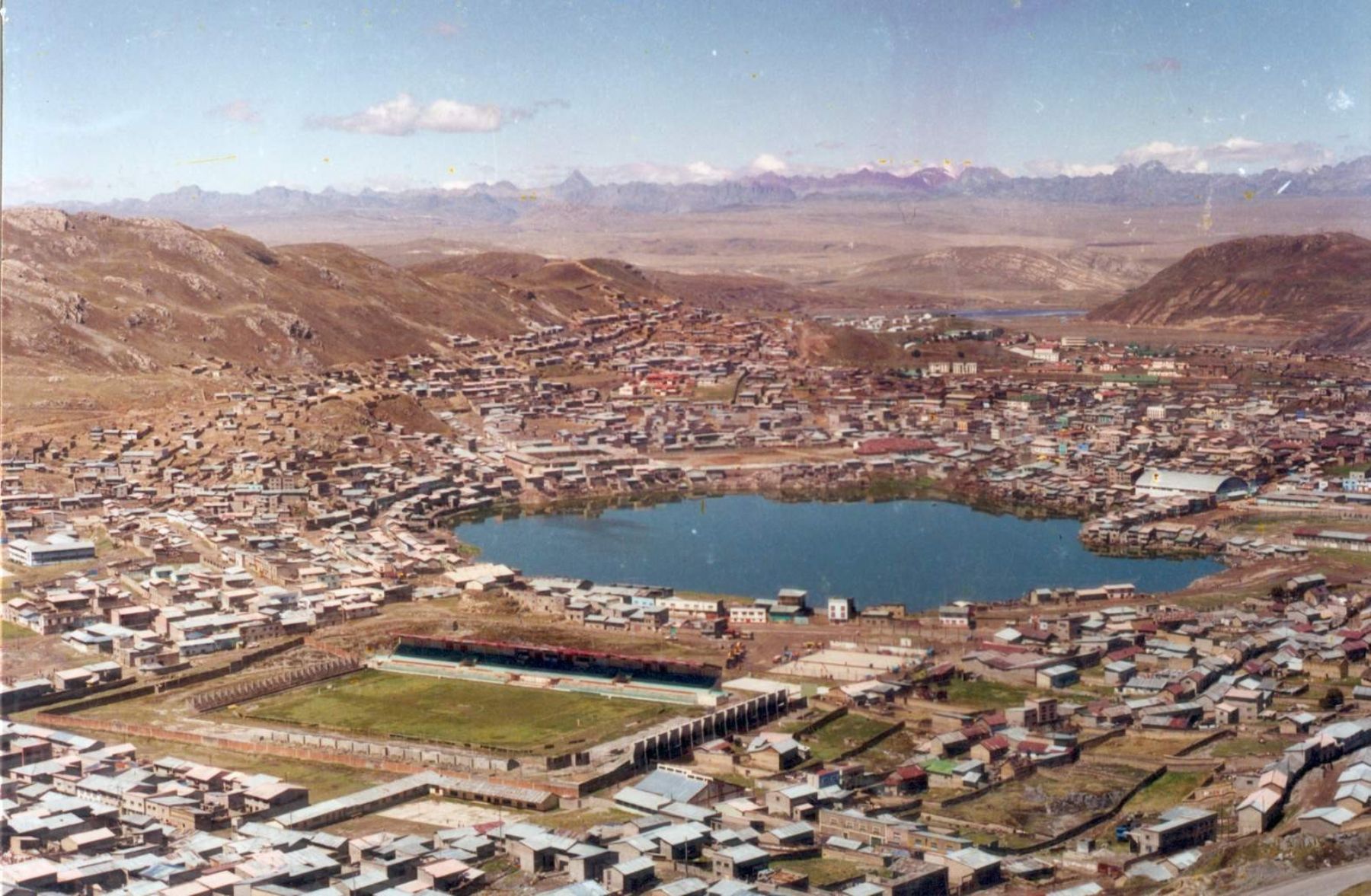Cerro de Pasco
Cerro de Pasco on the map of Peru
Cerro de Pasco (founded as Villa de Pasco ) is a Peruvian city with over 70,000 residents. It is the capital of the Pasco region.
Geography
Location
Cerro de Pasco is located on a plateau in the Andes and is considered one of the highest cities in the world. She is trapped in a plane in the central Andes at Mount Ulianchin and at the foot of the lagoon Patarcocha in the geographic region of Tierra helada in which only Ichu grass grows and in which the related with the llamas live vicuña.
Traffic
From the capital, Lima, the city is about eight hours away by car. The path leads along the nature reserve of Lake Junín. Likewise, leads one of the world's highest-altitude railway lines to Cerro de Pasco. However, it is not the passenger, but the transport of ores to La Oroya, or to the coast to Lima. Alternative well-developed routes for freight transport ( road and rail) sometimes do not exist. A connection from Lima Canta after Huayllay and Cerro de Pasco is discussed. It would relieve the Carretera Central.
Economy
Cerro de Pasco is considered the center of the mining industry in the Central Andes of Peru. In the center of Cerro de Pascos is the open pit mine " Raul Rojas " and an underground mine. Since the 1960s, lead and zinc is there mainly mined previously and copper. A large part of the population is (silver, lead, gold, copper, and zinc ) were employed in mining. The social conflicts in mining in Cerro de Pasco in the early 20th century, explores the El Cóndor Pasa play.
Population
The city of Cerro de Pasco is divided into three districts. Its urban population share is in sum the population of Cerro de Pasco. It is Chaupimarca ( 28,000 inhabitants), Yanacancha ( 28,000 inhabitants) and Simón Bolívar ( 14,000 inhabitants). Thus, the city ( census 2007) has around 70,000 inhabitants.
Climate
The climate in Cerro de Pasco is mainly determined by the height. The year is divided into two seasons, a rainy period from September to May and a dry season from June to August. The average annual temperature is 4.2 ° C.
History
The city was founded in 1578 as a mining settlement. In the 17th century it was discovered in Cerro de Pasco silver mines. During the years 1639 to 1740 Cerro de Pasco became famous through his mineral wealth and could in terms of the yield with the previous silver capital Potosí be measured. The Spanish miner Jose Maiz y Arias had built an enormous tunnel in Yanacancha and found large amounts of silver deposits. In the reign of Viceroy Luis Fernández y Cabrera 1639, he sent five million ducats from Cerro de Pasco to Spain. The population rose sharply and the interest of the Spanish crown was reflected in the award of titles resist.
On December 7, 1820 General Arenales proclaimed the independence of Pasco and appointed Ramón de Arias mayor.










